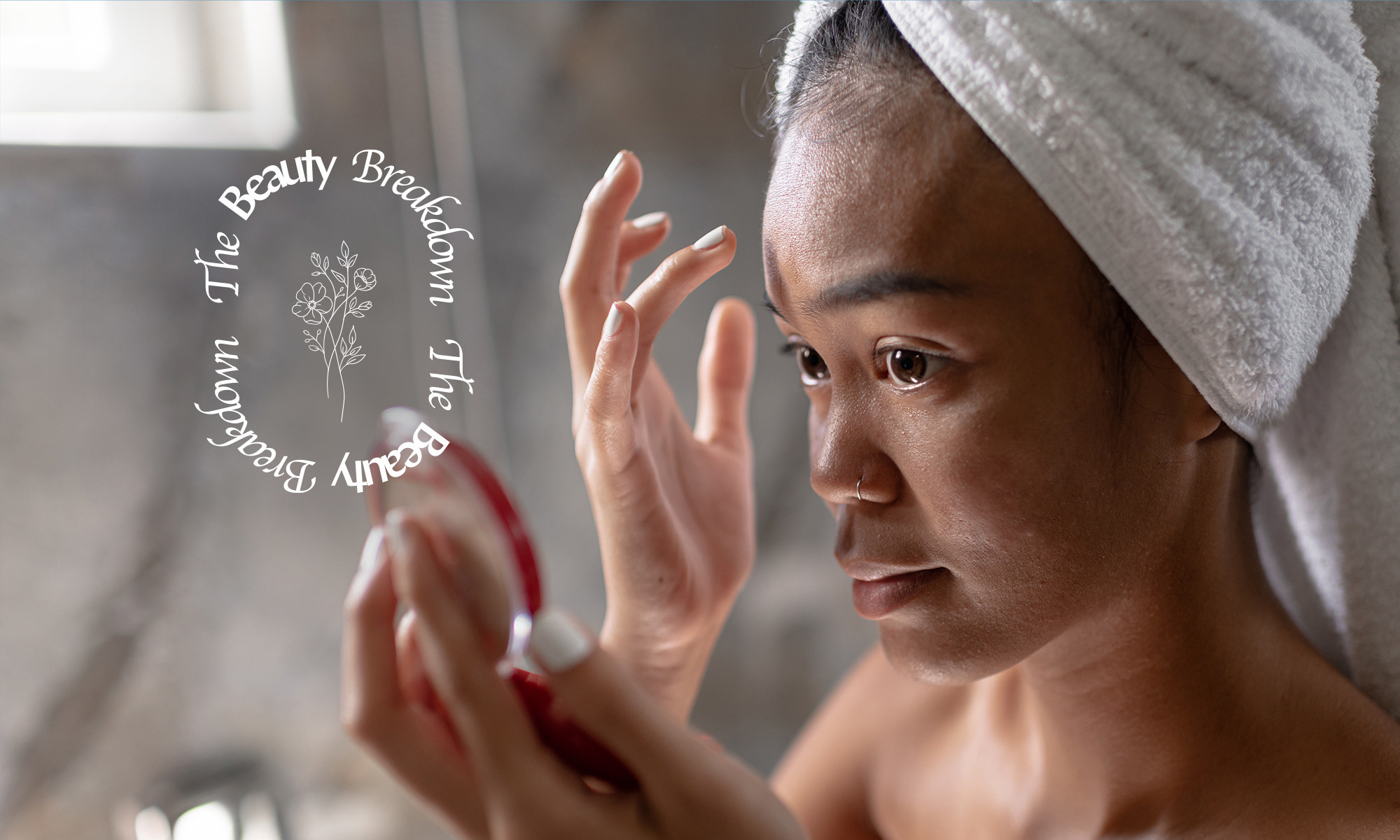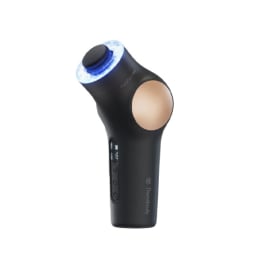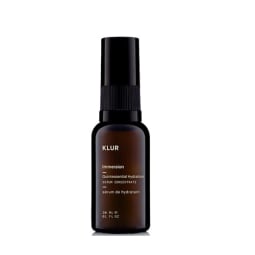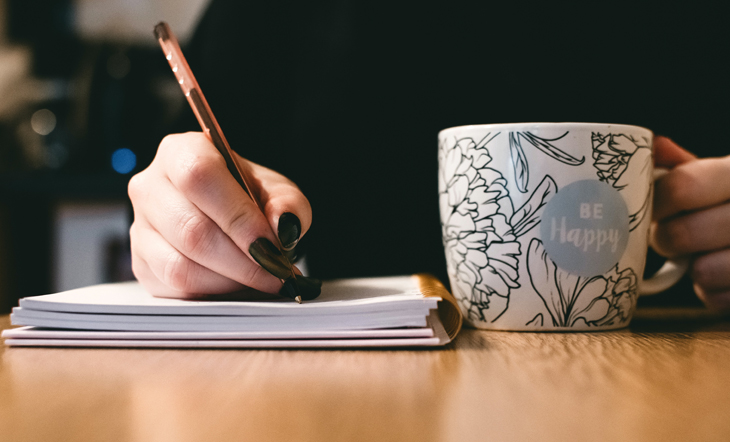Do These At-Home Tools Magically Lift & Tone? What The Pros Say
Meant to mimic treatments from an aesthetician or facialist, these tools can deliver real results—if used properly.


mbg Beauty Director
mbg Beauty Director
Alexandra Engler is the beauty director at mindbodygreen and host of the beauty podcast Clean Beauty School. Previously, she's held beauty roles at Harper's Bazaar, Marie Claire, SELF, and Cosmopolitan; her byline has appeared in Esquire, Sports Illustrated, and Allure.com.
Image by mbg creative x Atolas May 22, 2023 Our editors have independently chosen the products listed on this page. If you purchase something mentioned in this article, we may Welcome to the Beauty Breakdown, our series that dives into today's buzziest beauty topics. In each, we focus on a different theme and highlight all the need-to-know basics, common mistakes, and the best products to get your hands on. Over the last several years, we’ve seen a skyrocketing interest in at-home facial tools. From LED masks and microcurrent devices to handheld facial massagers, it seems everyone is curious about bringing professional-level technology to the comfort of their own bathroom. As it tends to happen when anything “new” explodes onto the zeitgeist, folks have a lot of questions about the topic—and as well as a few misconceptions that need clearing up. So in an attempt to cut through the noise, we decided to break down the buzzy world of at-home facial tools. Image by mbg Creative / mbg creative

The 101 on at-home facial tools
The facial tool category is one that could technically include a wide range of products—from rollers and ice globes you can find on Amazon to splashy masks and handhelds that come with price tags in the thousands.
Here, at mindbodygreen and in this article, we’ve using the term “at-home facial tools” to mean any device that is typically found in a professional or spa setting (i.e. a facial), that is also available to the masses.
The point of these tools is to mimic treatment normally received via an aesthetician or facialist. The potential benefits of these tools typically revolve around addressing aging concerns, such as fine lines, sagging, sallowness, dark spots, puffiness, and dullness. But there are technologies that can also help with blemishes. In a lot of cases, these tools are used as a preventative measure—meaning they’re used in the hopes of keeping skin looking younger for longer, rather than correcting a specific concern.
We go over the various types of tools, and who they are best suited for, in an upcoming section—but here’s an overview.

Image by mbg Creative / mbg creative
The 4 things we’re getting wrong about at-home facial tools
There’s actually a lot of bad advice out there about these tools—here, some things to keep in mind.

Image by mbg Creative / mbg creative
The 6 types of facial tools you need to know about
Here, we get into the various types you can try. We do an overview of how they work and their benefits, but there is certainly more to delve into. (If we included everything about these tools, this article would be never ending.) Throughout, we link out to our other guides and resources on the subjects, so you can get the full scope.
Facial massagers and sculptors
I’m using “facial massagers” as a catch-all term for a few types of tools for the sake of this article, but each one of these really warrants its own deep dive—several of these modalities come with a fascinating history of use, research to back their benefits, and more. (Again, I’ve linked out to other resources so you can learn more!)
Facial massages in general are incredibly beneficial for the skin: Studies show us that regular facial massages can truly help improve skin quality. For example, in one study patients saw feeling tighter, more lifted skin1 after regular massages.
This is likely because of the effects on circulation: one study showed that facial rolling for only five minutes a day improved blood flow to the face1. This is notable, as blood brings with it nutrients and resources to the skin—so theoretically improved circulation contributes improved skin quality.
"So often in beauty we talk about collagen, elastin, skin cell turnover, and those are all important things to talk about because they are part of the skin function and structure. But what Chinese medicine also says is that we need to talk about circulation—because circulation is what feeds all of that," says Sandra Lanshin Chiu, L.Ac., M.S.T.C.M.. "In fact, it goes back to the very basic principle in Chinese medicine, which is that circulation is everything."
Here, some of the best facial massage modalities to look into:
Mbg pro tip:
Gua shas, kansa wands, and rollers all work best with a slippery topical product that can help glide them over the skin. Always pair your tool with a facial oil compatible with your skin type.
LED & microcurrent
While very different technologies and pathways, LED and microcurrent technologies improve the skin’s appearance by reducing inflammation, stimulating the skin’s fibroblasts, and improving ATP production. Essentially, these tools help your skin rejuvenate more effectively.
We’ll start with LED therapy. "[Light therapy] works via a phenomenon called photobiomodulation. This is where different components of our cells are activated or respond to different wavelengths of light," board-certified dermatologist Erum Ilyas, M.D., MBE, FAAD, tells mbg about the modality.
The gist of it is that by exposing the skin to various wavelengths of visible light (i.e. red LED, blue LED, green, and so forth), it will stimulate certain activities in the skin cells—resulting in better skin health overall. The benefits that you can come to expert from LED tools are highly dependent on the color, and blue and red tend to be the used and studied.
Now onto microcurrent devices, which are tools that emit low (micro) levels of electrical currents to the skin.
"Microcurrent is a very tiny electrical current that mimics your body's own natural pulses. What that means is our brains use currents to communicate through our neurological pathways, where it's constantly sending signals. What we're doing with this technology is mimicking those currents and delivering them to our facial muscles," says biomedical engineer and holistic skin care expert Pooja Johari, M.S., founder of 7E Wellness. These pulses, she notes, stimulate our muscles to act younger. "The thing is, the facial muscles can't tell whether the signal is coming from the brain or this device."
This very cool technology works on a cellular level, powering up your skin’s production of adenosine triphosphate (ATP). ATP is a molecule that's naturally produced in the body and acts as an energy currency—your body (skin and muscles included) uses it as part of its regenerative process, creating more collagen, elastin, and so on. It also works by strengthening the muscles, improve product penetration, sculpting the complexion, and can help ease inflammation.
Mbg pro tip:
Microcurrents need a “conductor gel” to work. These are aqueous-based serums that help the current travel into the skin. Since microcurrents can actually aid in product penetration, it’s very important to use non-irritating, safe ingredients. We recommend looking for options that use aloe vera and soothing antioxidants.
Microneedling & dermaplanning
Microneedling (or dermarolling is the term used when done at home) is a practice we tend to advise against doing yourself. The practice involves using a roller that has small spikes in it that create tiny puncture wounds that allow for deeper product penetration and stimulates collagen production as a wound response.
While it can certainly be beneficial when performed by a professional, it comes with too many risks at home and is likely not as effective.You can learn more about the tool here, should you want to do more research.
Dermaplaning is a form of manual exfoliation that removes peach fuzz and the top layer of your epidermis (called the stratum corneum). It’s become popular in the last several years because it gives your skin a very smooth, filter-like finish and allows for seamless makeup application.
However, there are definitely better ways to exfoliate, and I’d like to emphasize that peach fuzz is a totally normal thing to have. If you are curious about this, you’re best bet is to visit a professional who will know how many passes to for each area of the face.
Proceed with caution for both dermaplaning and dermarolling. Also anyone with active acne lesions, eczema, rosacea, psoriasis, rash, or any open wound should avoid them altogether.

Image by mbg Creative / mbg creative
The 3 extra tips
Take your results to the next level with these tips.

Image by mbg Creative / mbg creative
The 4 best products to try
Here, the best products to get you started.
Best tool: TheraFace Pro

Features
Massage Red, blue, and pink LED Microcurrent Silicone cleansing brush Hot/cold therapy (as an add-on)From the makers of TheraGun, comes this ingenious tool that covers all the bases. The base level is a facial massager (that can relieve tension in the face, relax muscles, and boost circulation), but then it has several attachments for different modalities. There are three different LED colors, microcurrent, a cleansing brush for a deep clean, and 3 different heads for targeted messaging. Plus, you can add on a hot-and-cold ring that targets swelling and inflammation. With regular use it can improve the appearance of fine lines, reduce inflammation, tone and sculpt the skin, target breakouts, and ease muscle tension.
Best stone: Lanshin Pro Gua Sha Tool

Features
Hand crafted from natural nephrite jade, which is a rarer form of jade that’s more sturdy and less prone to breakageDesigned by a gua sha expertThis patented tool, crafted by pro Sandra Lanshin Chiu, L.Ac., M.S.T.C.M., is made from nephrite jade. The unique shape means you can effortlessly use it on the face, including being able to target small, delicate areas.
Advertisement
This ad is displayed using third party content and we do not control its accessibility features.
Best oil: Supernal Cosmic Glow Oil

Features
Uses organic and wild harvested botanical oils in the formulaContains plants naturally high in vitamin CAlso includes a blend of omega 3, 6 and 9 fatty acidsThis stunning oil can create a nice base to glide facial rollers, gua sha stones, and other tools across. The formula features a blend of organic and wild harvest botanicals like baobab, marula, amla fruit, and squalane oils. The combination delivers omega fatty acids, vitamin C, and other antioxidants to the skin.
Best serum: Klur Immersion Serum Concentrate

Features
Uses organic and wild harvested botanicals in the formulaThe base is aloe and green tea water, meaning your getting hydration alongside antioxidant powerFeatures vitamin C for collagen productionFor tools that need a water based topical, this plush concentrate floods the skin with water. It uses green tea water, aloe vera, hyaluronic acid, vitamin C, and several other botanicals to fortify the skin barrier, soothe inflammation, and support collagen production.
Advertisement
This ad is displayed using third party content and we do not control its accessibility features.

Image by mbg Creative / mbg creative
The beauty breakdown
At-home facial tools can help you bring the spa to your own bathroom. But before you make a purchase or start using one, be sure to do your research: You want to pick a technology that will be beneficial for your specific needs—and make sure you’re using it correctly. And we do have to reinforce the message that these are pro-grade tools, so you need to adhere to professional advice. (And if you ever have any specific questions about these tools, I highly recommend speaking to an aesthetician.) Once you’ve got your tool, you might want to learn about how to use it before a big event.

 Astrong
Astrong 































